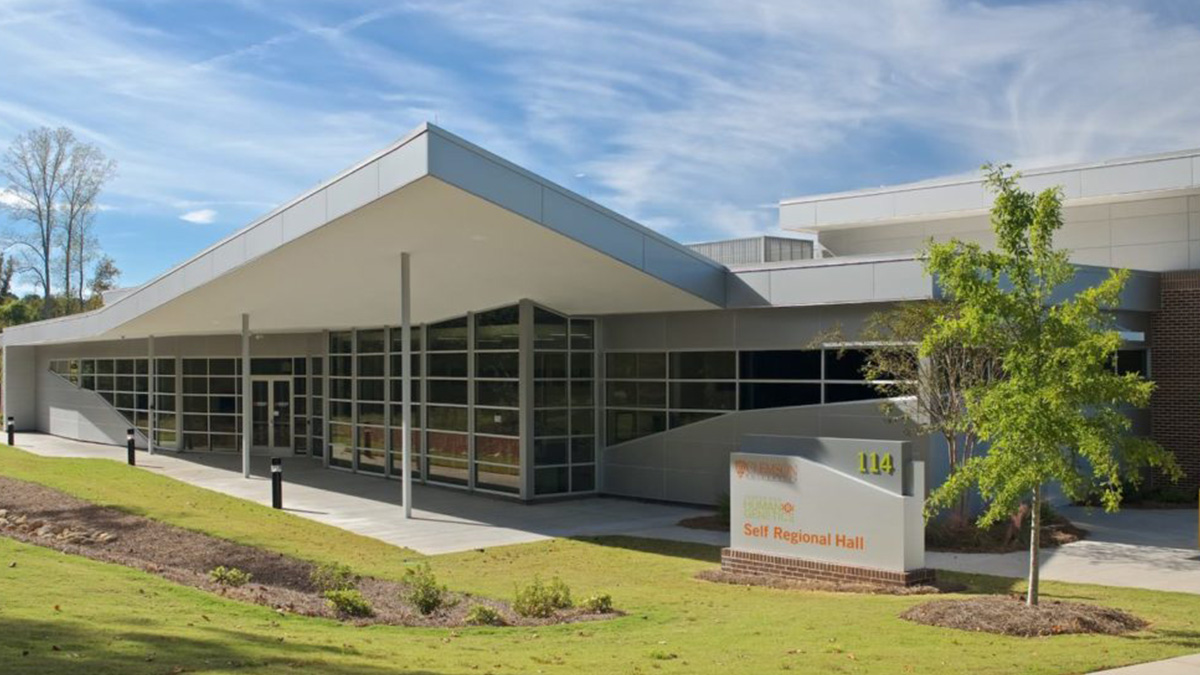Innovative Research for a Healthier Tomorrow
Advancing Genomic Science
Explore cutting-edge research and state-of-the-art facilities dedicated to improving health outcomes through genomic science.
Comprehensive Genomic Research
Our facilities are equipped to support large-scale genomic studies, enhancing our understanding of genetic disorders.
Advanced Computational Resources
Utilizing high-speed connections and powerful computing systems for sophisticated data analysis and bioinformatics.
Collaborative Research Environment
Fostering partnerships with leading institutions to drive innovation and discovery in genetic research.
Our COBRE Mission
The Center of Biomedical Research Excellence (COBRE) in Human Genetics support the establishment and development of innovative, state-of-the-art biomedical and behavioral research centers at institutions in IDeA-eligible states through awards for three sequential five-year phases. Our mission is to harness the power of genomic science to uncover new insights into genetic disorders and develop innovative solutions that benefit individuals in South Carolina and beyond. We are committed to fostering a collaborative environment that supports groundbreaking research and education.
Explore Our Facilities
Clemson University Main Campus
Explore Our Satellite Facilities
Clemson University, Center for Human Genetics, Greenwood Genetic Center Partnership Campus
The Clemson University Center for Human Genetics (CUCHG) is in Self Regional Hall, a recently constructed 17,000 sq. ft. facility located on the Greenwood Genetic Center Partnership Campus in Greenwood, SC.
Offices
Dr. Mackay has a personal office with a conference area (291 sq. ft.) and Dr. Anholt has a personal office of 138 sq. ft. In addition there is a 591 sq. ft. office suite with 11 modular desk spaces for students, postdoctoral fellows and research staff. There is a separate conference room (177 sq. ft.), a classroom (378 sq. ft.) and seminar room (750 sq. ft.), all equipped with computer projection and long distance video communication. The building contains a central 997 sq. ft. bioinformatics facility to integrate statistical genetics and computational genomics approaches with projects that employ molecular genetics. In addition to computational and wet lab faculty, the Center is supported by a dedicated Ph.D. level bioinformatician (Dr. Vijay Shankar) and an experienced molecular biologist (Ms. Kaitlyn William, M.S.).
Laboratories
The Mackay and Anholt laboratories are consolidated as joint facilities that comprise a Drosophila laboratory (550 sq. ft.) with 12 workstations, each with a dedicated dissecting microscope, and an attached office (99 sq. ft.); and a molecular laboratory (710 sq. ft.) with a lab manager office (99 sq. ft.). The molecular laboratory is immediately adjacent to an additional 4,061 sq. ft. representing six remaining labs ranging from 710 sq. ft. to 500 sq. ft. of molecular laboratory space to accommodate new faculty. The laboratories are equipped with laminar flow and chemical containment hoods and eye wash stations, and the Drosophila laboratory is equipped with a central CO2 distribution system for fly work. There is also a microscopy room for fluorescent and confocal microscopy and a workstation for generating transgenic flies, including a microscope, micropipette puller, micromanipulator and an injection system. An ice machine and liquid nitrogen storage containers are in proximity to the laboratories.
Drosophila Culture
The building has a dedicated media preparation room with autoclave and three temperature and light cycle controlled Darwin-incubator Drosophila stock rooms. These facilities are fully equipped for large-scale Drosophila culture and one of the Darwin-incubator rooms serves as a controlled environment for behavioral assays.
Computer Resources
All offices are equipped with PC computers and there are several color printers and scanners. All computers are connected to the Internet and have software for word processing, data analysis and graphics. SAS is installed on multiple computer stations. Self Regional Hall is connected to the Clemson main campus-supercomputing center via light fiber with immediate capability to advance up to a 100-gig service to support collaborative computational genomic modeling and bioinformatic analysis with the Greenwood Genetic Center, with the Clemson University main campus, and with leading research universities across the United States. The computer and data management resources support large-scale genomic research collaborations manipulating massive data files.
Explore Our Partner
Greenwood Genetic Center: A Hub for Knowledge and Research
The Greenwood Genetic Center (GGC) operates four Divisions (Clinical, Diagnostic Laboratories, Research Laboratories, and Education) over a four building complex (102,000 square feet) in Greenwood, SC. The Center also operates four Satellite Clinic offices in Charleston, Greenville, Florence, and Columbia. Patients are evaluated in clinics staffed with highly skilled Clinical Geneticists and equipped for physical evaluation, photography and specimen collection. Postmortem evaluation facilities also exist at the J.C. Self Research Institute on the Greenwood Campus.
Laboratories
The GGC Research Division spans two state-of-the-art research wings, the J.C. Self Research Institute and the McAlhany Center for Collaborative Research. The Self Institute has 36,000 square feet of open laboratory space outfitted with personnel and equipment for molecular, biochemical, developmental, and microscopic studies. The McAlhany wing has four 14,000 square foot laboratories designed for molecular and cellular studies. This wing also houses a microscope imaging core. The Biochemical Genetics Laboratory occupies 4,300 square feet of space within the Diagnostic Laboratories of the GGC Treatment Center. The space accommodates specimen preparation and storage and a wide range of biochemical analyses. A major focus of the laboratory has been the lysosomal storage diseases including the glycoproteinoses. The Molecular Genetics Laboratory occupies 6,200 square feet of the Diagnostic Laboratories Treatment Center. This space accommodates offices, laboratory and support functions. The laboratory has dedicated space for DNA isolation, specimen preparation, sequencing analysis and data processing. The Cytogenetics Laboratory occupies over 3,000 square feet with designated spaces for laboratory sections specializing in processing peripheral blood, bone marrow, amniotic fluid, chronic villus samples and solid tissues for chromosome study. The Cytogenetics Laboratory provides karyotype and FISH analysis for diagnostic and research purposes. In addition, the Cytogenomics (Microarray) Laboratory occupies 4,500 square feet of newly refurbished space for laboratory, office, conference and support activities. The laboratory space accommodates sample storage and handling, DNA and RNA prep, standard, real-time and digital PCR, array processing and scanning, gel prep and imaging, and array analysis.
Allin Aquaculture Facility
This facility occupies 1,200 sq. ft. in the J. C. Self Research Institute. It consists of five rooms: a 500 square foot housing room, a 300 square foot preparation and manipulation room, and separate rooms for the pumps and life support system. There are also dedicated quarantine and microscope rooms. The housing unit is a fully automated system capable of housing 10,000 adult zebrafish. The housing system is outfitted with a complete monitoring and alarm system that alerts the staff to any fluctuations in water or system conditions. The facility is equipped with all instrumentation necessary for embryo manipulation as well as the generation of novel knock-in and knock-out lines.
Bioinformatics
The GGC Bioinformatics team has created an in-house clinical-grade pipeline capable of performing the full analysis of Next Generation Sequencing data from raw sequencing reads to create variant call files (VCFs) for interpretive review. At full capacity, the current pipeline is capable of managing up to 90 exomes or 40 genomes per week, with a maximum turnaround time of 24 hours per proband. The pipeline allows for virtual filtering of exome or genome alignments into user-defined sub-panels, as well as the prediction of copy number variants via comparison to an internal database of previously analyzed patients. The 7-member team is currently expanding to incorporate the analysis of oncology-related applications and additional machine learning techniques into the pipeline.
Library
The GGC library is located in a 4,000 square foot area adjacent to the research lab and has approximately 1,000 square feet for archive storage. The library collection includes 1,200 textbooks and 55 journal titles. A full time librarian maintains the collection and performs searches. Other educational spaces include an auditorium, four conference rooms, two classrooms, and study areas for fellows and students (1,200 square feet).
Join Us in Advancing Research
We invite you to become a part of our mission to enhance health and well-being through groundbreaking research. Whether you are interested in collaborating on innovative projects, supporting our initiatives, or seeking further information, your engagement is crucial to our success. Together, we can make a significant impact on the scientific community and beyond. Reach out to us today to explore how you can contribute to our efforts and benefit from our state-of-the-art facilities and expert teams.





